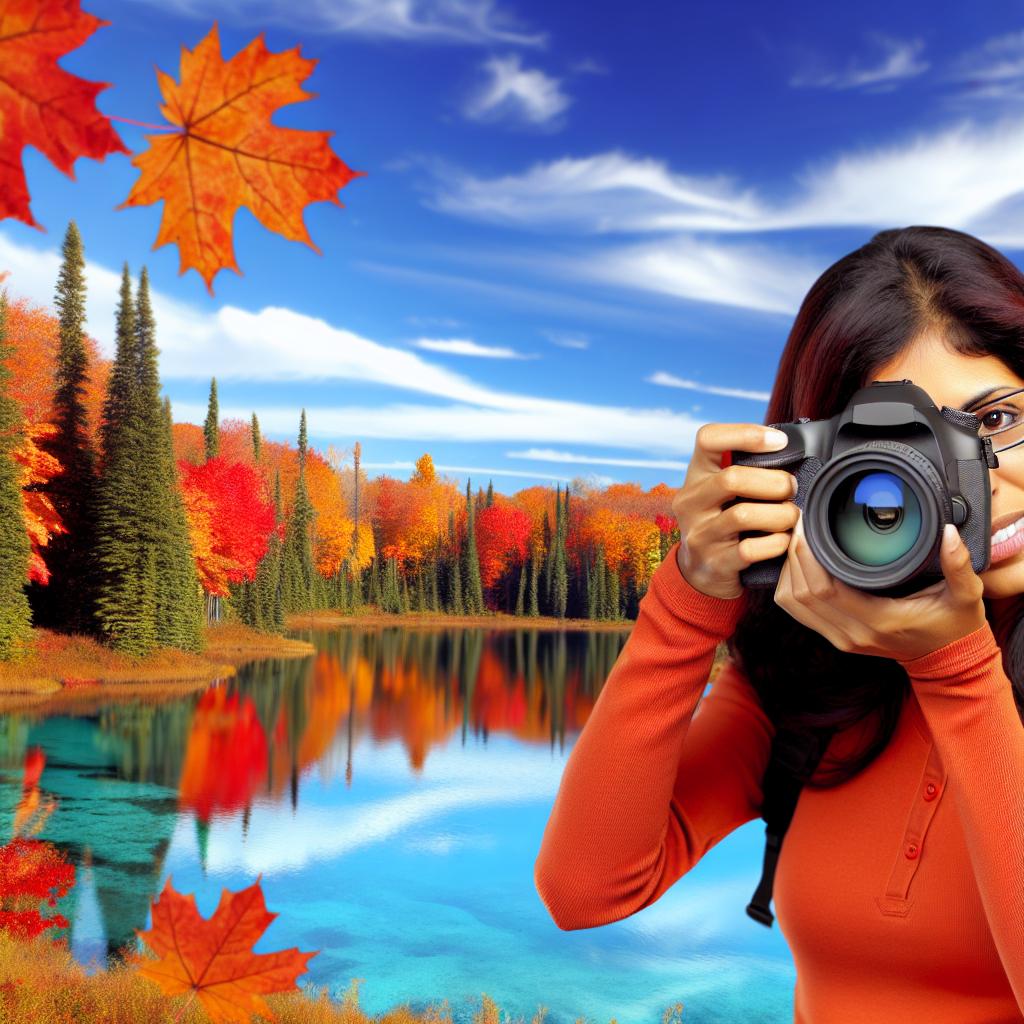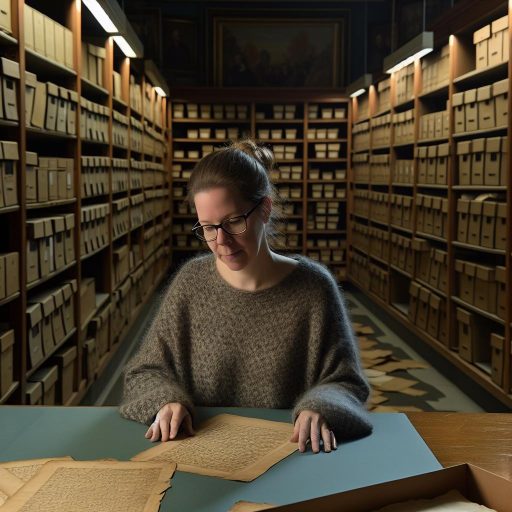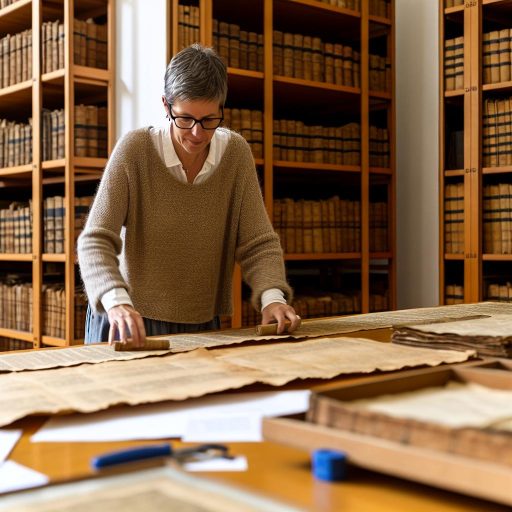Exploring Banff National Park: Capturing the Majestic Mountains and Lakes
Introduction to Banff National Park
Banff National Park is a photographer’s paradise.
It boasts stunning landscapes that captivate every visitor.
This park features jagged mountains, serene lakes, and diverse wildlife.
As a result, photographers of all levels will find inspiration here.
Best Time for Photography
Plan your visit during sunrise for the best light.
Golden hour enhances the richness of colors in your photos.
Alternatively, autumn offers vibrant foliage across the landscape.
Winter transforms the park into a serene, snow-covered wonderland.
Iconic Locations to Capture
Lake Louise is a must-see for every photographer.
Its turquoise waters reflect the surrounding peaks beautifully.
Another notable spot is Moraine Lake, known for its striking blue hues.
Here, you can capture amazing shots at every angle.
Additionally, the Banff Springs Hotel provides a dramatic backdrop for photos.
Tips for Taking Stunning Shots
Use a tripod to stabilize your camera for long exposure shots.
Experiment with different angles to find unique perspectives.
Pay attention to the weather; it can change rapidly.
Clouds can add drama, while clear skies provide vibrant colors.
Wildlife Photography
Keep an eye out for wildlife, such as elk and bears.
Maintain a safe distance while photographing these majestic creatures.
Early mornings and late evenings are the best times to spot wildlife.
Post-Processing for a Professional Touch
Consider editing your photos to enhance their visual impact.
Adjusting contrast and saturation can make colors pop.
Use cropping to create a more focused composition.
Editing software can help you achieve a polished final look.
Vibrant Cityscapes: Urban Photography Opportunities in Toronto
Exploring Iconic Landmarks
Toronto offers a variety of iconic landmarks for photographers to capture.
Unlock Your Career Potential
Visualize a clear path to success with our tailored Career Consulting service. Personalized insights in just 1-3 days.
Get StartedThe CN Tower is a must-see for stunning skyline shots.
Additionally, the Royal Ontario Museum provides unique architectural features.
Both locations present fantastic opportunities for creative composition.
Capturing Everyday Life
The Distillery District is perfect for capturing urban culture.
Its cobblestone streets and historic buildings create a charming atmosphere.
This area also features vibrant street art, ideal for dynamic photographs.
Photographing locals adds a personal touch to your image collection.
Utilizing Natural Light
Toronto’s waterfront offers beautiful natural lighting conditions.
Visit during the golden hour for warm, soft light effects.
Lake Ontario provides stunning reflections, enhancing your photos.
Furthermore, urban parks like High Park create serene environments.
Engaging in Cultural Events
Toronto hosts numerous cultural festivals throughout the year.
Events such as Caribana and the Toronto International Film Festival attract diverse crowds.
These occasions provide exciting subjects and vibrant color palettes.
Capturing candid moments during these events showcases the city’s energy.
Experimenting with Urban Night Photography
Toronto transforms into a magical city at night.
Neon lights and illuminated buildings offer rich visual opportunities.
Great locations include Yonge-Dundas Square and the Entertainment District.
Long exposure techniques create stunning effects for nighttime shots.
The Coastal Beauty of Vancouver Island: Seascapes and Nature Photography
Introduction to Vancouver Island’s Landscape
Vancouver Island offers stunning coastal scenery for photography enthusiasts.
From rugged shorelines to serene beaches, this island has diverse landscapes.
Photographers can capture natural beauty at every turn.
Best Locations for Seascape Photography
Several locations stand out as prime spots for seascape photography.
- Tofino is famous for its wild surf and dramatic sunsets.
- Victoria’s Inner Harbour offers picturesque views of boats and buildings.
- The beaches of Long Beach provide expansive views of the Pacific Ocean.
Each location provides unique opportunities to experiment with different styles.
Wildlife Photography Opportunities
Vancouver Island is rich in wildlife, making it an ideal photography destination.
Whale watching tours allow photographers to capture breathtaking marine life.
Also, see sea otters and sea lions lounging on the rocks around Tofino.
Birdwatching along the coastal parks offers chances to photograph various species.
Tips for Capturing Nature’s Beauty
Proper planning enhances your photography experience on Vancouver Island.
Visit during golden hours for the best lighting conditions.
Bring a variety of lenses to capture wide landscapes and detailed shots.
Always be patient and observe the surroundings; good shots often require waiting.
Consider using filters to manage glare and improve colors in your images.
Exploring Vancouver Island Through Photography
Vancouver Island is a paradise for aspiring photographers.
Its coastal beauty and diverse ecosystems offer endless inspiration.
Each visit reveals new opportunities for stunning photographs.
Discover More: Effective Strategies for Growing Your Content Creator Brand
Wilderness Adventure: Photographing the Northern Lights in Yukon
Why Yukon is Ideal for Photography
Yukon is renowned for its breathtaking landscapes.
The region offers stunning vistas, especially during winter months.
Additionally, the vast open skies enhance visibility of the Northern Lights.
Photographers can capture unique shots of nature and wildlife.
Best Time to Visit
The ideal time to witness the Northern Lights is from late August to mid-April.
During this period, longer nights guarantee optimal viewing conditions.
Cold temperatures can create clearer skies, improving visibility further.
Moreover, early spring often presents increased solar activity.
Essential Photography Tips
Use a sturdy tripod to stabilize your camera for long exposures.
Additionally, utilize a wide-angle lens to capture expansive scenes.
Set your camera to a high ISO to enhance light sensitivity.
Furthermore, experiment with different exposure times for varied effects.
Be patient and wait for the right moment to capture the lights.
Recommended Locations for Shooting
- Whitehorse: The capital city offers great accessibility.
- Kluane National Park: A stunning backdrop of mountains and glaciers.
- Old Crow: This remote location provides minimal light pollution.
- TAGISH: Ideal for tranquil lakes reflecting the auroras.
Stay Prepared
Dress warmly to endure the cold while photographing outside.
Layer your clothing to adjust to varying temperatures.
Bring extra batteries, as cold weather can drain them quickly.
Plan your trip carefully to locate the best vantage points.
Find Out More: Understanding Analytics for Canadian Digital Content Creators
Cultural Richness: Documenting Indigenous Communities in British Columbia
Exploring the Landscape
British Columbia boasts stunning landscapes ideal for photography.
You can capture diverse environments, from lush forests to coastal shores.
Each location presents a unique opportunity to showcase Indigenous culture.
Consider visiting the Great Bear Rainforest for breathtaking views.
An excursion to the Gulf Islands will reveal rich community heritage.
Engaging with Indigenous Communities
Connecting with local Indigenous artists enhances your photography journey.
Attend workshops led by talented photographers like Naomi Mark.
Learn about cultural narratives that inform their artistic perspective.
Your lens can capture authentic representations of Indigenous life.
Moreover, respect and sensitivity are crucial during your interactions.
Documentary Style Photography
Adopt a documentary style to tell compelling stories through images.
This approach highlights everyday life in Indigenous communities.
Use your camera to depict traditional ceremonies and contemporary practices.
Showcase the resilience and adaptiveness of these cultures.
Consider partnering with Indigenous photographers for deeper insights.
Preserving Cultural Heritage
Photography plays a vital role in preserving cultural heritage.
Documenting artifacts and historical sites safeguards Indigenous narratives.
Engage with elders who can share stories of the past.
Capturing these moments fosters appreciation for diverse histories.
Each photograph contributes to a broader understanding of cultures.
Ethical Considerations
Ethics in photography is paramount when documenting cultures.
Always seek permission before photographing individuals or sacred ceremonies.
Understand the significance of the elements you capture.
Maintain humility and openness in your approach.
Respecting cultural boundaries leads to more meaningful connections.
Gain More Insights: How to Market Your Photography Services Effectively

Historic Sites and Architecture: Toronto’s Distillery District Through Your Lens
Exploring the Distillery District
The Distillery District is a vibrant hub in Toronto.
This historic area showcases stunning Victorian buildings.
It features cobblestone streets that invite exploration.
Photographers will find endless opportunities for unique shots.
Architectural Highlights
Start with the iconic Gooderham and Worts distillery.
This structure encapsulates the essence of Victorian architecture.
Capturing its brick façade during golden hour works wonders.
Also, don’t miss the historic tank houses.
These buildings offer a glimpse into Toronto’s industrial past.
Cultural Experiences
The Distillery District hosts numerous art galleries.
Street art adds color and vibrancy to your photos.
Additionally, local artisans often display their creations.
Attending festivals here provides fantastic photo opportunities.
Events often celebrate art, food, and culture.
Recommended Photography Tips
- Use natural light for soft shadows and highlights.
- Experiment with different angles to create depth.
- Incorporate foreground elements for added interest.
- Focus on details, such as textures and patterns.
- Patience is key, especially when capturing people interacting with the space.
Endless Opportunities Await
The Distillery District offers a captivating backdrop for photography.
Its blend of history, culture, and architecture awaits your lens.
Plan your visit to explore and capture unforgettable moments.
See Related Content: Must-Have Tools for Every Aspiring Fashion Designer
Pristine Wilderness: Wildlife Photography in Jasper National Park
Overview of Jasper National Park
Jasper National Park spans over 4,000 square kilometers.
It boasts stunning landscapes and diverse ecosystems.
This park serves as a prime location for wildlife photography.
Photographers can capture breathtaking mountain backdrops.
Vast forests and shimmering lakes provide ideal settings.
Best Times for Wildlife Photography
Early mornings yield the best lighting for photographs.
Wildlife is often most active during dawn and dusk.
Additionally, autumn offers colorful foliage for stunning shots.
Spring is perfect for capturing newborn animals.
Plan visits according to the seasonal behavior of the wildlife.
Wildlife Species to Photograph
Jasper National Park is home to many fascinating species.
Elk are frequently spotted throughout the park.
Black bears are a popular subject for photographers.
Additionally, mountain goats can be found in rocky areas.
Be on the lookout for coyotes and wolves during your visit.
Photography Tips
Use a telephoto lens to capture wildlife from a distance.
Ensure you have a sturdy tripod for stability.
Practice patience to wait for the perfect moment.
Consider the weather conditions to enhance your shots.
Always respect wildlife and maintain a safe distance.
Choosing the Right Equipment
Invest in high-quality lenses to improve image clarity.
Bring extra batteries to avoid missing great moments.
Consider using a camera bag that protects from moisture.
Bring filters to enhance colors and reduce glare.
A good pair of binoculars can help locate wildlife.
Seasonal Changes: Capturing Fall Colors in Algonquin Provincial Park
Introduction to Algonquin Provincial Park
Algonquin Provincial Park is a paradise for photographers.
It boasts stunning landscapes and diverse wildlife.
Every autumn, the park transforms with vibrant fall colors.
Best Time to Visit
The peak foliage usually occurs in late September and early October.
Plan your visit during this time for the best color display.
Notably, the last week of September often showcases vibrant hues.
Key Photography Spots
- The Highway 60 Corridor offers breathtaking views.
- Lookout points such as the Old Airfield provide panoramic vistas.
- Opeongo Lake is ideal for capturing reflections of colorful trees.
Tips for Capturing Fall Colors
Adjust your camera settings to enhance color saturation.
Use a polarizing filter to reduce glare from the leaves.
Experiment with different angles to find unique perspectives.
Golden hours—early morning or late afternoon—are perfect for soft lighting.
Wildlife Photography Opportunities
Algonquin is home to various wildlife, including moose and deer.
Keep your distance and use a zoom lens for capture.
Capture animals interacting with the colorful surroundings.
What to Bring
- A sturdy tripod to stabilize your camera.
- Extra batteries and memory cards for long days.
- A wide-angle lens to capture expansive landscapes.
Local Insights and Amenities
Visit the Algonquin Visitor Centre for resources and tips.
Consider staying overnight for early morning photography sessions.
Local campsites and lodges offer convenient access to scenic areas.




